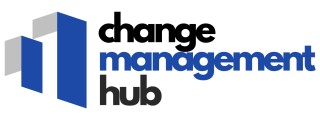-large-teaser.webp)
Understanding the Basics of Change Management
The Foundation of Change Management
To navigate a successful project management plan for change management, it’s essential to grasp the foundational elements of change management itself. At its core, change management encompasses defining the project scope and ensuring that all processes align with the organization’s strategic objectives. This requires a meticulous project management plan that identifies key areas like roles and responsibilities, quality standards, and risk management.
Identifying Objectives and Scope
The first step in a robust change management initiative is understanding the objectives and setting a clear project scope. A detailed project scope helps in outlining what the project will accomplish, including the work breakdown structure. Clear objectives not only guide the project team but also help identify potential risks, costs, and resources required for successful implementation.
Ensuring Quality and Standards
Quality control is a critical component in any effective management plan. Establishing rigorous quality standards ensures that all elements of the project meet predefined benchmarks. This is particularly important in change management as it determines the overall success of the project. A plan template often includes quality assurance parameters that the team must adhere to throughout the project lifecycle.
Involving the Project Team and Stakeholders
An essential part of the change management process involves bringing together a dedicated project team and engaging relevant stakeholders. The project manager plays a central role in coordination and communication, ensuring every team member understands their roles and responsibilities. Regular communication, facilitated through a robust communication plan, helps in keeping everyone aligned with the project goals and solving any potential challenges efficiently.
Key Components of a Sample Project Management Plan
Defining the Project Scope
When crafting a project management plan for change management, defining the project scope is a critical first step. The project scope outlines the boundaries of the project, detailing what will be included and what will not. This helps the project team and stakeholders understand the limits and expectations, ensuring that everyone is on the same page from the outset. A well-defined scope prevents scope creep, which can lead to increased costs and time overruns.
Establishing a Project Schedule
Creating a project schedule is essential for effective project planning. This schedule should detail the timeline for each phase of the project, including key milestones and deadlines. The project manager will work closely with team members to ensure that the schedule is realistic and achievable. Regular updates and adjustments may be necessary to accommodate unforeseen changes, but having a solid schedule in place provides a roadmap for the project.
Identifying Roles and Responsibilities
Clearly defining roles and responsibilities within the project team is crucial for successful change management. Each team member should understand their specific duties and how they contribute to the overall project goals. This clarity helps in maintaining accountability and ensures that tasks are completed efficiently. The project manager plays a pivotal role in coordinating these efforts and facilitating communication among team members.
Risk Management and Quality Control
Risk management is a vital component of any project management plan. Identifying potential risks early allows the project team to develop strategies to mitigate them. This proactive approach helps in minimizing disruptions and maintaining project quality. Additionally, implementing quality control measures ensures that the project meets the established quality standards, leading to successful outcomes.
Communication Plan
A robust communication plan is integral to the success of a change management project. This plan should outline how information will be shared among stakeholders, the project team, and the project sponsor. Effective communication helps in managing expectations and facilitates collaboration. Regular updates and feedback loops are essential to keep everyone informed and engaged throughout the project lifecycle.
For more insights on tactical management in change initiatives, you can explore navigating tactical management in change initiatives.
Strategies for Successful Change Implementation
Implementing Effective Strategies
The success of a project in the context of change management hinges on implementing strategies that align with the overarching goals and vision established during the project planning phase. A well-documented management plan is crucial to maintain the balance between project scope, cost, and quality standards. To achieve optimal outcomes, various strategies can be employed. Firstly, develop a robust communication plan. Clear communication channels ensure that all team members and stakeholders have a shared understanding of their roles and responsibilities, which mitigates potential misalignments or misunderstandings. The communication plan should detail how information about project scope, schedule, and changes in the project will be conveyed. Breakdown structure is another vital strategy. Creating a work breakdown structure (WBS) allows the project manager and the project team to manage tasks effectively. By detailing project components into smaller, manageable tasks, it becomes easier to allocate resources, identify potential risks, and establish a realistic project schedule. Risk management should not be an afterthought. Identifying and analyzing potential risks early in the project planning stages can prevent costly disruptions. Develop a risk management process that includes regular risk assessments and contingency planning to address unforeseen challenges. Maintaining quality control throughout the project is essential to ensure that deliverables meet the defined quality standards. Implementing periodic quality checks throughout the project's lifecycle helps manage expectations and enhances project quality. Finally, it's important to leverage the right tools and processes. Whether using a traditional project management approach or an agile mindset, the choice should align with the project's scope and goals. To understand the intersection of project management roles, explore the difference between project manager vs scrum master for deeper insights. Incorporating these strategies into your change management plan sets a solid foundation for successfully navigating the complexities often involved in organizational change.Overcoming Common Challenges in Change Management
Identifying Potential Obstacles
Change management projects often encounter common challenges that can obstruct progress if not preemptively addressed. A vital part of the project manager’s role is to identify these obstacles early in the project planning phase. Potential challenges can range from vague project scope to inadequate communication among team members and stakeholders. Successful project management includes assessing these risks and implementing a robust risk management process.Developing a Risk Management Plan
A comprehensive risk management process is essential to navigate the possible pitfalls in a change management project. The project plan should include a detailed risk management strategy that defines the roles and responsibilities of team members in addressing risks. Creating a risk register and conducting regular risk assessments will help the project team stay equipped to tackle unforeseen issues while maintaining the project schedule and controlling costs.Maintaining Flexibility and Adaptability
Change management initiatives require a level of flexibility in the project plan. Unprecedented circumstances might disrupt the project schedule or require modifications in the plan template. The project manager should ensure that the team is prepared to adapt to evolving situations while maintaining alignment with the project sponsor's vision. Constant collaboration and communication with stakeholders can facilitate smoother transitions and reduce disruptions.Ensuring Quality Control and Standards
Quality control is a crucial element of successful change implementation, as it ensures that the final delivered product meets quality standards. The project will benefit from incorporating quality assurance measures into its framework. This includes setting clear quality benchmarks and implementing regular quality checks throughout the project lifecycle. By doing so, the project team can guarantee that changes are implemented with precision and meet the objectives specified in the project scope.Role of Communication in Change Management
Communication: The Pulse of Change Management
In the realm of change management, communication is not merely a supporting player, but rather the heartbeat that fuels the entire project. To manage change effectively, a well-rounded communication plan must be established as a cornerstone of your project planning process. Ensuring the project team and stakeholders remain informed and aligned can greatly influence the success of the change initiative. A project manager must proactively identify the scope of communication needs and incorporate these into the project management plan. This involves:- Defining Roles and Responsibilities: Understanding who will communicate what, to whom, and when, is fundamental. Clearly delineate roles and responsibilities to the project manager, team members, and any additional stakeholders.
- Developing a Communication Template: Establish a consistent communication template that guides the delivery of information throughout the project. This can help maintain a high quality of communication and ensure that all parties receive the right message at the right time.
- Establishing a Regular Schedule: Creating a project schedule for regular updates keeps the team and stakeholders engaged. Consistent communication can ease anxieties and build trust by keeping everyone informed of progress and any potential risks.
- Utilizing Feedback to Adjust the Plan: Ongoing feedback from stakeholders can provide invaluable insights into the efficacy of the current communication strategies. Adjusting the plan as necessary to meet changing needs is a vital component of adaptive project management.
Measuring Success in Change Management Projects
Evaluating Achievement in Change Initiatives
In project management, the capability to measure the success of change initiatives is paramount. This assessment process ensures that the project scope is met while maintaining quality standards and keeping the change management process on track. A project manager must employ a comprehensive evaluation methodology, integrating both qualitative and quantitative metrics.
Establishing Clear Metrics
To ensure the effectiveness of a project plan, it is essential to identify tangible success indicators beforehand. These should align with the project’s objectives and the overarching management plan. Common metrics might include the extent of stakeholder engagement, adherence to the project schedule, cost containment, and quality control outcomes.
Tools and Techniques for Measurement
- Performance Dashboards: Utilizing project management software can assist teams in monitoring real-time progress against the plan template. Visual aids like dashboards provide a snapshot of project performance compared with the expected outcomes.
- Feedback Loops: Implementing regular communication channels will help assess the project's direction. Listening to team members and stakeholders through structured feedback is crucial to maintain alignment with roles responsibilities and the scope of change management.
- Risk Management Evaluation: An effective way to gauge success is analyzing risk management strategies. Identifying unforeseen risks and adapting the project plan accordingly demonstrates an agile and responsive approach to change.
Engaging Stakeholders in the Evaluation Process
The involvement of stakeholders is critical in the evaluation phase. This engagement adds depth to the assessment, as stakeholders may offer insights into areas such as the quality of work, cost effectiveness, and the overall benefit of changes implemented. Including them in this process not only refines the project breakdown structure but fosters a culture of continuous improvement.












